Related Research Articles
The history of Trinidad and Tobago begins with the settlements of the islands by Indigenous First Peoples. Trinidad was visited by Christopher Columbus on his third voyage in 1498,, and claimed in the name of Spain. Trinidad was administered by Spanish hands until 1797, but it was largely settled by French colonists. Tobago changed hands between the British, French, Dutch, and Courlanders, but eventually ended up in British hands following the second Treaty of Paris (1814). In 1889, the two islands were incorporated into a single political entity. Trinidad and Tobago obtained its independence from the British Empire in 1962 and became a republic in 1976.
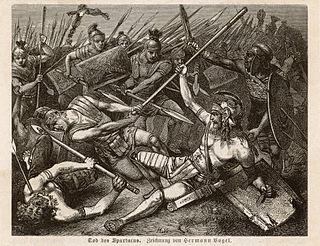
A slave rebellion is an armed uprising by slaves, as a way of fighting for their freedom. Rebellions of slaves have occurred in nearly all societies that practice slavery or have practiced slavery in the past. A desire for freedom and the dream of successful rebellion is often the greatest object of song, art, and culture amongst the enslaved population. These events, however, are often violently opposed and suppressed by slaveholders.

The Mandinka or Malinke are a West African ethnic group primarily found in southern Mali, the Gambia, southern Senegal and eastern Guinea. Numbering about 11 million, they are the largest subgroup of the Mandé peoples and one of the largest ethnic-linguistic groups in Africa. They speak the Manding languages in the Mande language family, which are a lingua franca in much of West Africa. Virtually all of Mandinka people are adherent to Islam, mostly based on the Maliki jurisprudence. They are predominantly subsistence farmers and live in rural villages. Their largest urban center is Bamako, the capital of Mali.

The emancipation of the British West Indies refers to the abolition of slavery in Britain's colonies in the West Indies during the 1830s. The British government passed the Slavery Abolition Act in 1833, which emancipated all slaves in the British West Indies. After emancipation, a system of apprenticeship was established, where emancipated slaves were required by the various colonial assemblies to continue working for their former masters for a period of four to six years in exchange for provisions. The system of apprenticeship was abolished by the various colonial assemblies in 1838, after pressure from the British public, completing the process of emancipation. These were the steps taken by British West Indian planters to solve the labour problems created by the emancipation of the enslaved Africans in 1838.
Dutty Boukman was an early leader of the Haitian Revolution. Born in Senegambia, he was enslaved to Jamaica. He eventually ended up in Haiti, where he became a leader of the Maroons and a vodou houngan (priest).

Slavery in the Spanish American viceroyalties was an economic and social institution which existed throughout the Spanish Empire including Spain itself. Enslaved Africans were brought over to the continent for their labour, indigenous people were enslaved until the 1543 laws that prohibited it.
The Bilali Muhammad Document is a handwritten, Arabic manuscript on West African Islamic law. It was written in the 19th century by Bilali Mohammet, an enslaved West African held on Sapelo Island of Georgia. The document is held at the Hargrett Rare Book & Manuscript Library at the University of Georgia as part of the Francis Goulding papers. It is referred to as the "Ben Ali (Bilali) Manuscript".

Muslims constitute 5.6 percent of the population of Trinidad and Tobago. The majority live in Trinidad but there are a handful in Tobago as well.

Cuba is a majority Christian nation, with Islam being one of the smallest minority faiths in the country. According to a 2011 Pew Research Center report, there were then 10,000 Muslims in Cuba who constitute less than 0.1% of the population. As of 2012, most of the 10,000 Cuban Muslims were converts to the religion.
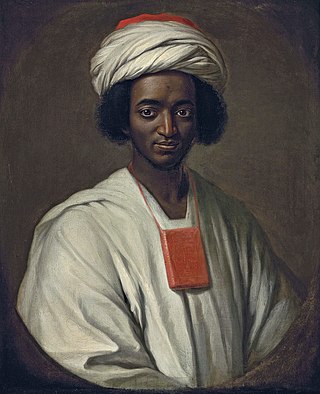
Ayuba Suleiman Diallo (1701–1773), also known as Job Ben Solomon, was a prominent Fulani Muslim prince from West Africa who was kidnapped and trafficked to the Americas during the Atlantic slave trade, having previously owned and sold slaves himself.
Zephaniah Kingsley Jr. was a plantation owner, born in England, who moved as a child with his family to South Carolina, and became a planter, slave trader, and merchant. He built four plantations in the Spanish colony of Florida near what is now Jacksonville, Florida. He served on the Florida Territorial Council after Florida was acquired by the United States in 1821. Kingsley Plantation, which he owned and where he lived for 25 years, has been preserved as part of the Timucuan Ecological and Historic Preserve, run by the United States National Park Service. Finding his large and complicated family progressively more insecure in Florida, he moved them to a vanished plantation, Mayorasgo de Koka, in what was then Haiti but soon became part of the Dominican Republic.
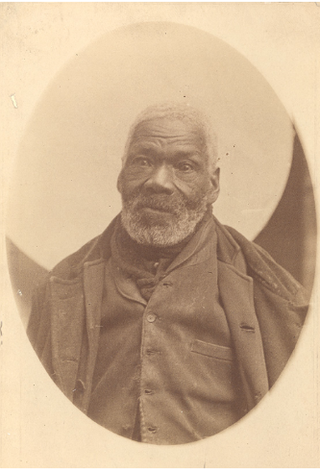
Black refugees were black people who escaped slavery in the United States during the War of 1812 and settled in Nova Scotia, New Brunswick, and Trinidad. The term is used in Canada for those who settled in Nova Scotia and New Brunswick. They were the most numerous of the African Americans who sought freedom during the War of 1812. The Black refugees were the second group of African Americans, after the Black Loyalists, to flee American enslavement in wartime and settle in Canada. They make up the most significant single immigration source for today's African Nova Scotian communities. During the antebellum period, however, an estimated 10,000 to 30,000 Black refugees reached freedom in Canada, often traveling alone or in small family groups.
Mandingo people of Sierra Leone is a major ethnic group in Sierra Leone and a branch of the Mandinka people of West Africa. Most Sierra Leonean Mandingo are the direct descendants of Mandinka settlers from Guinea, who settled in the north and eastern part of Sierra Leone, beginning in the late 1870s to the 1890s under the rule of prominent Mandinka Muslim cleric Samori Ture. Also later a significantly large population of Mandinka from Guinea migrated and settled in Eastern Sierra Leone and Northern Sierra Leone in the early to mid 20th century. The Mandingo people of Sierra Leone have a very close friendly and allied relationship with their neighbors the Mandingo people of Guinea and Liberia, as they share pretty much identical dialect of the Mandingo language, tradition, culture and food.
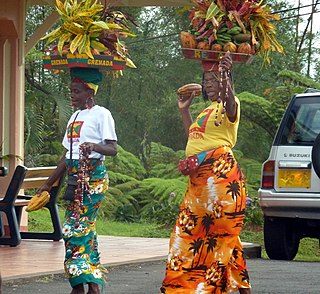
Afro-Grenadians or Black Grenadians are Grenadian people of largely African descent. This term is not generally recognised by Grenadians or indeed Caribbeans. They usually refer to themselves simply as 'Grenadians' or 'Caribbean'. The term was first coined by an African Americans history professor, John Henrik Clarke (1915–1998), in his piece entitled A Note on Racism in History. The term may also refer to a Grenadian of African ancestry. Social interpretations of race are mutable rather than deterministic and neither physical appearance nor ancestry are used straightforwardly to determine whether a person is considered a Black Grenadian. According to the 2012 Census, 82% of Grenada's population is Black, 13% is mixed European and black and 2% is of Indian origin.

Afro-Saint Lucians or West African-Saint Lucians, are Saint Lucians whose ancestry lies within the West and Central Africa. However, many Afro-Saint Lucians also have small amounts of non-African ancestry such as Arawak, Carib, European and Indian.

Afro-Vincentians or Black Vincentians are Vincentians whose ancestry lies within Sub-Saharan Africa.
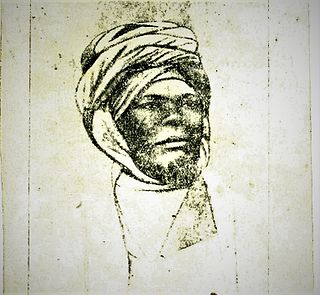
The Oku people or the Aku Marabout or Aku Mohammedans are an ethnic group in Sierra Leone and the Gambia, primarily the descendants of marabout, liberated Yoruba people who were released from slave ships and resettled in Sierra Leone as Liberated Africans or came as settlers in the mid-19th century.
The History of slavery in Michigan includes the pro-slavery and anti-slavery efforts of the state's residents prior to the ratification of the Thirteenth Amendment to the United States Constitution in 1865.

The Merikins or Merikens were African-American Marines of the War of 1812 – former African slaves who fought for the British against the US in the Corps of Colonial Marines and then, after post-war service in Bermuda, were established as a community in the south of Trinidad in 1815–1816. They were settled in an area populated by French-speaking Catholics and retained cohesion as an English-speaking, Baptist community. It is sometimes said that the term "Merikins" derived from the local patois, but as many Americans have long been in the habit of dropping the initial "A" it seems more likely that the new settlers brought that pronunciation with them from the United States. Some of the Company villages and land grants established back then still exist in Trinidad today.

Black Canadians migrated north in the 18th and 19th centuries from the United States, many of them through the Underground Railroad, into Southwestern Ontario, Toronto, and Owen Sound. Black Canadians fought in the War of 1812 and Rebellions of 1837–1838 for the British. Some returned to the United States during the American Civil War or during the Reconstruction era.
References
- 1 2 3 4 5 6 Brereton, Bridget (2016). "Bath, Jonas Mohammed". In Knight, Franklin W.; Gates, Henry Louis Jr. (eds.). Dictionary of Caribbean and Afro–Latin American Biography. Oxford: Oxford University Press. ISBN 9780199935796.
- 1 2 3 4 5 6 7 8 Campbell, Carl (1975). "John Mohammed Bath and the Free Mandingos in Trinidad: The Question of Their Repatriation to Africa 1831–38". Journal of African Studies . 2: 467–495.